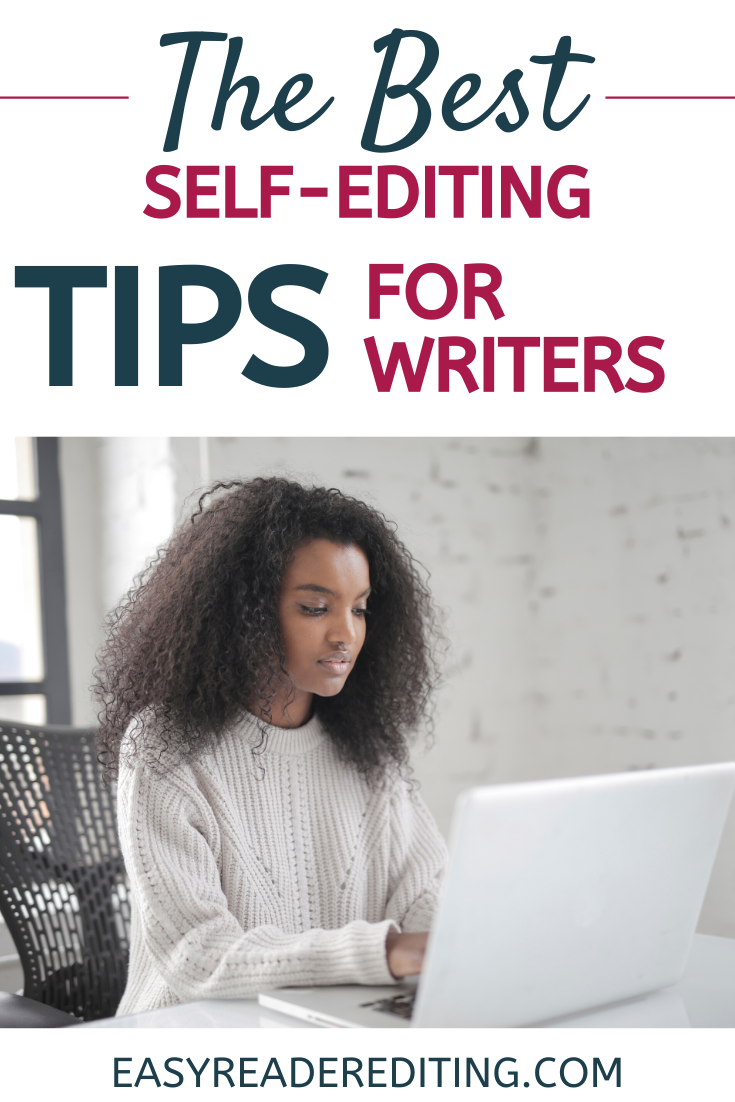The Best Self-editing Tips for Writers
As an Amazon Associate, I earn from qualifying purchases. Learn more here.
Get your manuscript in superstar shape before you hire a pro
Image credit: Andrea Piacquadio from Pexels
Writers will always fall into various camps when it comes to self-editing, but the majority of them recognize the need to have their work edited to one degree or another. As a professional editor, of course I’ll always recommend hiring a pro. But there are those who will always want to do most or all of the work themselves, and rather than leave them drifting about, aimlessly following zombie rules (I’ll tell you all about those in a later post), I can now recommend a killer book that will help them on their way to writing greatness.
The book I’m talking about is appropriately called Self-editing for Self-publishers, and its author, Richard Bradburn, is not only a writer of novels, short stories, and news articles, but he’s also an editor. He wrote this book specifically because he realized that most books on writing don’t actually give much attention to self-editing as a process. They may list “revising” or “editing” as one of the many steps, but they rarely go into detail as to what the writer should be looking for, how to recognize it when they find it, and what to do to fix it.
That’s not how any of this works
When a book is picked up by a publisher, the process of getting that book to the reader is a shared experience. Someone is hired by the publisher to edit, to do the formatting and design work, to create the cover, and to proofread. The publisher will usually do at least part of the marketing and promotion as well.
But when a writer chooses to self-publish, they take on every job. The book’s creation is but one part of a large pie. Those other jobs may be hired out to others who specialize in the given field (let’s give a cheer for people who recognize how much work goes into a good cover!), but the writer is still responsible for finding those professionals.
So if you’re planning to self-publish or to have a great manuscript to query with, let’s start with the basic question:
What type of self-editor are you?
When you think about self-editing, what comes to mind?
I’m getting my writing as polished as possible to keep my professional editing costs down and to write even better next time
I’m revising my manuscript but not stressing about the details because that’s my editor’s job
I’m doing all this editing stuff because I have zero plans to actually hire a professional to go through my book before I publish
I’m just writing it down and getting it out there. Editing? The crowds will love my story and they won’t care about the rest of the technical stuff.
If you answered 1 . . . or 2 . . . or even 3, you have a lot in common with most writers. It’s a rare person who considers himself a serious writer yet has no desire to get better at it for whatever reason. If you answered 4, well . . . perhaps you should read some of my older blog posts. Or perhaps I should write a new blog post just for you.
What’s important to know about this book
Self-editing for Self-publishers is broken into three distinct parts.
Part I: This section of the book explains exactly what’s involved in self-editing, from the whole concept of it to the mindset a writer needs to have while doing it. Self-editing requires that you put yourself in the place of an agent, publisher, or reader. See past all your darlings and your fits of genius and take a hard look at what really works, what may be marketable in the genre you’ve written in, and what may be marketable because it’s innovative and fresh.
Part II: The second section focuses on big-picture items like plot, character, pacing, and the like. It gives examples of what to look for, but it’s more of a “read this to be informed” section rather than a tutorial.
Part III: The third section gets to the nitty gritty, right at the sentence level, and shows you how to find, analyze, and fix what’s wrong—or what’s okay but could be better. Bradburn takes care to show examples from “both sides of the pond,” as he puts it, so that the section can serve as a style guide for what the publishing industry expects and requires. As he reminds us, “Professional editors have textbooks to hand and constantly refer to them.”
And don’t forget the special surprise inside
There are six—yes, six!—appendices to help you on your way, because you know what? Richard Bradburn really, really wants to help make your book shine. He goes into how to write a synopsis, work out your point of view issues, hire an editor, use beta readers, learn editing terminology, and even choose the most helpful editing software. If you need only one appendix’s information, it’s there. If you need all six, they’re all there, waiting to help and bursting with information.
Where to find this book
The easiest place to look for it is on Amazon.
Here’s a fun surprise, too: Bradburn has a contemporary classical piano CD on Amazon, too—something I discovered when looking for his links (this man appears to do it all). How fun is that?
And back in the writing realm, Bradburn hosts TheOpeningLines.com website, where he will critique your novel’s opening 1000 words, completely free of charge, so you can ascertain whether your book’s first words will make an agent say “MORE” or grab a rejection slip.
So grab that book, and allow me to wish you a happy self-editing journey!



